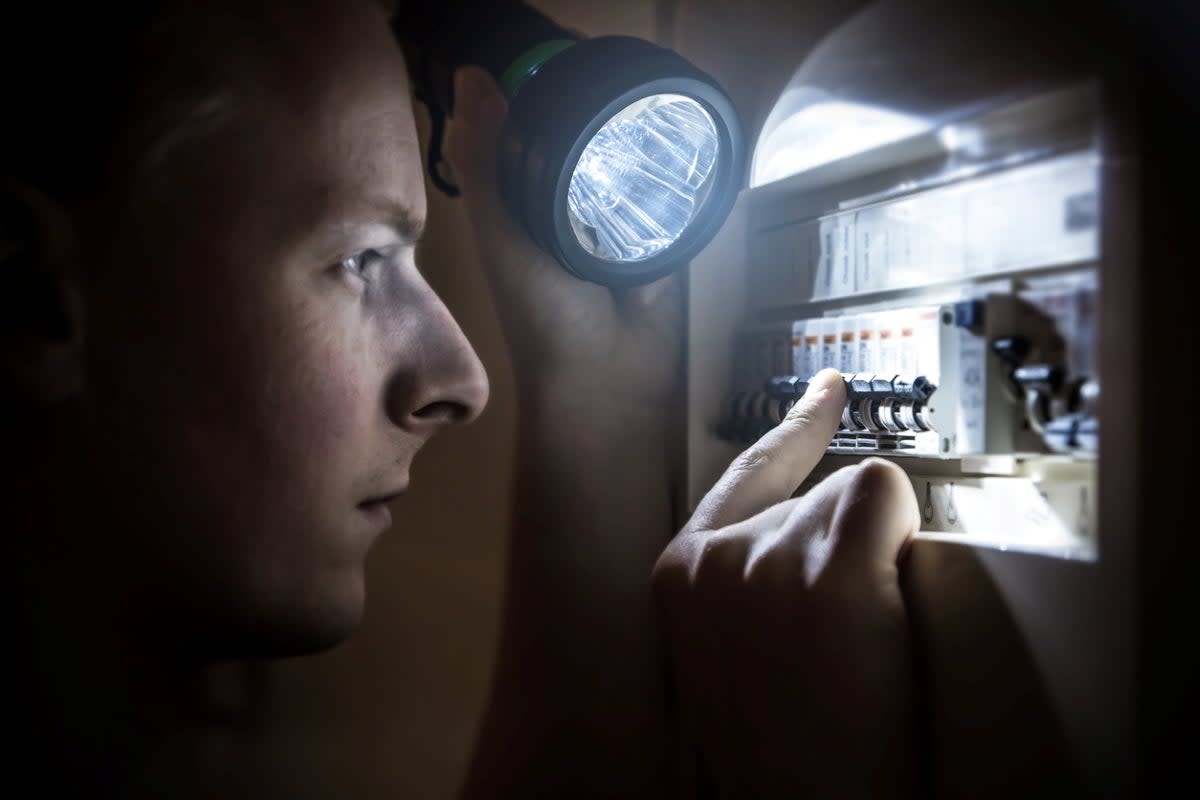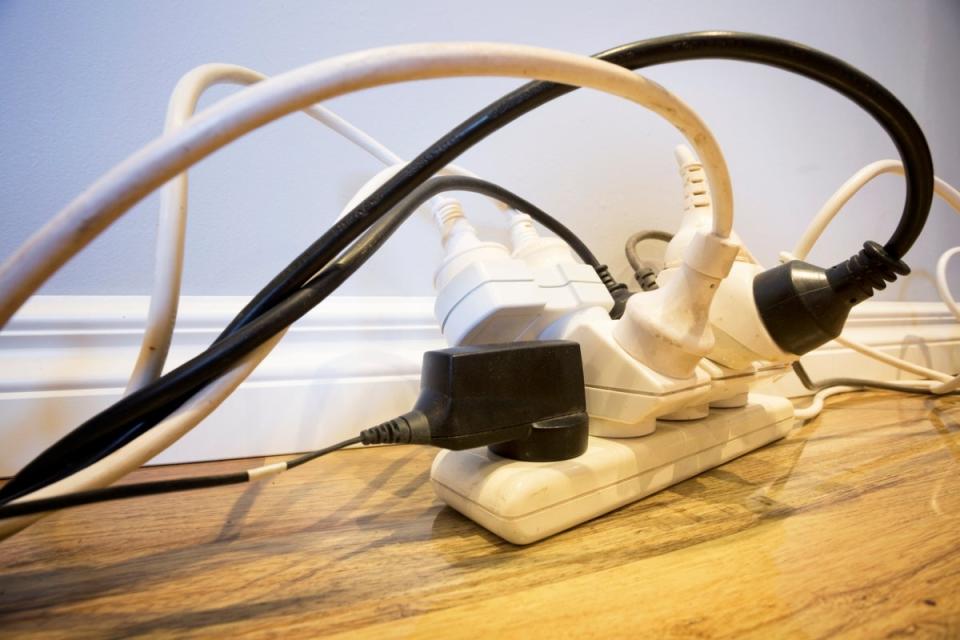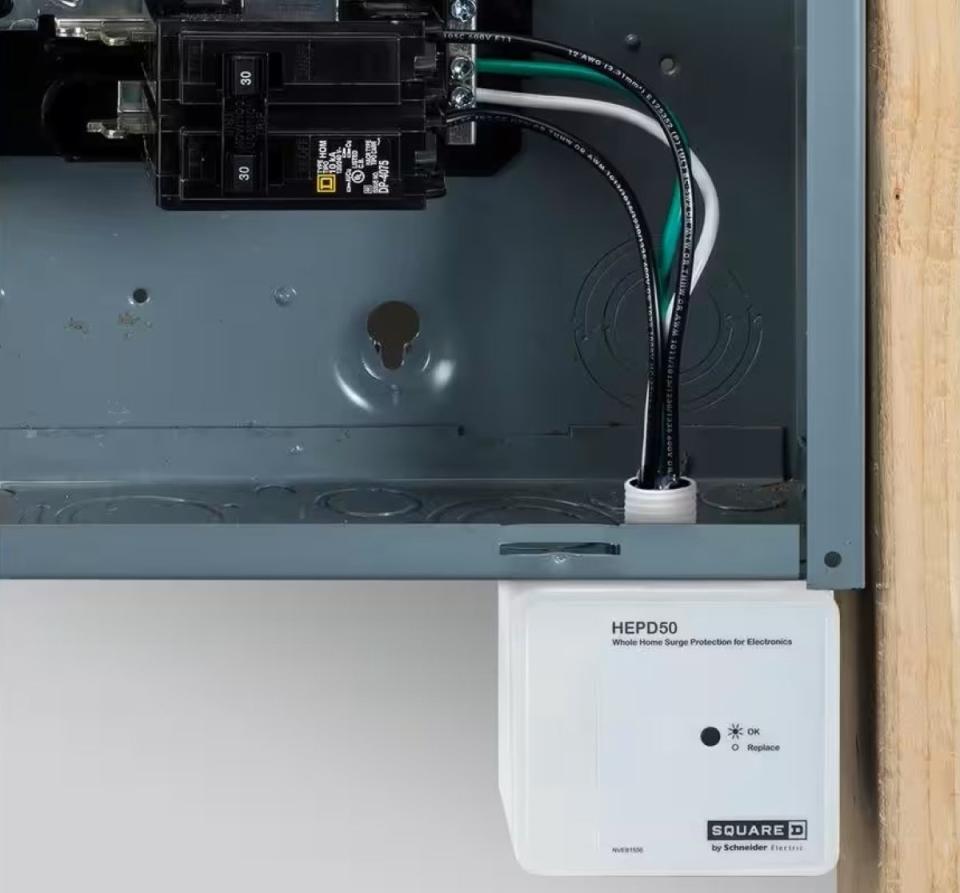Solved! What Is a Power Surge?

Q: I’m always reading scary stories about how sudden power surges can be strong enough to fry all the electrical devices in my house. But what is a power surge, and what kind of damage can it really do?
A: Let’s tackle the scary stories first. Yes, a power surge (or power spike) can damage just about any electrical device in your home—from the furnace and air conditioner, to the fridge and freezer, to the washing machine and dryer, to TVs and computers. Your home insurance may cover some of the damage, but as the Insurance Information Institute points out, prevention is the best course of action. In a moment, we’ll look at the steps you can take, but before we do, let’s talk about exactly what is a power surge, and what causes them.
RELATED: Preparing Your Home for Natural Disasters Can Pay Off—Here’s How
A power surge is a sudden voltage spike in a home’s electrical system.
A power surge means there is a higher than normal voltage event. They can come from outside or inside the home, and they actually happen all the time. Fortunately, most power surges are so small they are harmless and go unnoticed. The threshold is usually 169 volts. So at 170 volts and above, there is potential for damage.
Serious power surges can carry thousands of volts, and they can rip through your home in a fraction of a second, instantly burning out the HVAC system, appliances, and more sensitive electronic devices. Standard breakers are no defense because these are tripped by over-current events (excess amps) not excess voltage. They are also relatively slow. The power spike is through them, and the damage done, before they can react.
There are a few common things that can cause a power surge.

Photo: istockphoto.com
When people are asked what causes power surges one of the most popular responses is lightning. That is perfectly true, and lightning can generate more than 300 million volts so it can be extremely destructive. However, it is not the only cause—nor the most common.
In fact, every electrical device produces a small power surge when it is turned on. Anything from sump pumps to vacuum cleaners to power drills can produce a surge. As long as the device is working properly and wired correctly, these spikes are well below the danger threshold.
Other causes with the potential to result in damage are:
Power outages, or rather the surge that occurs when power is restored
Faulty wiring, especially short circuits
Electrical overloads, for instance when too many devices are plugged into an extension cord
RELATED: 15 Things You Should Never Do When the Power Goes Out
Look for warning signs to avoid internal power surges.
Faulty wiring doesn’t only create power surges in house circuits, but it can also be a potential fire hazard. It can be difficult to detect problems when cabling is hidden behind drywall or in floor and roof spaces, but there are some giveaway signs that are easier to identify:
A circuit breaker that trips repeatedly is almost certainly a wiring fault
Brown burn marks on outlets or melted plastic often indicate short circuits
Plugs that feel hot to the touch could suggest an overload
Crackling noises from plugs, extension cords, or any type of electrical connector are signs of a problem
Flickering lights, especially when turned on, might just be a dying bulb but can indicate other faults
In addition to the threat of power surge damage or fire, these things also have the potential for life-threatening electric shocks. If any of these are found we strongly recommend getting things checked by a qualified electrical contractor.
Use surge protectors to protect your devices from potential damage.

Photo: homedepot.com
The easiest way to protect any electrical equipment from surges is to unplug them, and if you have early warning of a storm this is always a good idea. Of course it’s not practical all the time, or for all devices, so the alternative is a power surge protector (also called a surge protection device or SPD).
There are two distinct types. A whole-house surge protector is wired into the main electrical service panel, and sends any over-voltage safely to earth before it gets any further. These offer the highest level of protection but are often quite expensive, and with most types professional installation is mandatory. Their effectiveness is underlined by recent changes to the National Electrical Code that now make them a requirement in all new residential dwellings.
The alternative is a single outlet appliance surge protector, or a multi-outlet surge protector power strip. Both of these are very affordable. The latter often looks similar to a standard power strip but it’s important to check the details carefully to ensure you’re getting the protection you need. The drawback with most power strip surge protectors is that while they can be very good at protecting equipment, a single over voltage event may burn them out. A light on the device indicates whether it is functioning or not, and this needs to be checked regularly especially after a storm or power outage.
RELATED: 15 Things You Should Never Plug Into a Power Strip
Final Thoughts
Power surges are part of everyday life, and most are never noticed. The problems come when there’s a serious event, and homeowners are unprepared. Your home insurance policy may cover the damage but anyone who has dealt with a claim will know that it can be a long and frustrating process, and coverage may not be as complete as expected.
We hope this article will help prevent that from happening to you. It clarifies precisely what is a power surge, and how you can stop one damaging your HVAC system, household appliances, and valuable electronics like TVs, laptops, and home audio equipment. Whether you choose a whole-house SPD or surge protection strips, it’s an investment worth making both in terms of potential savings and personal convenience.
